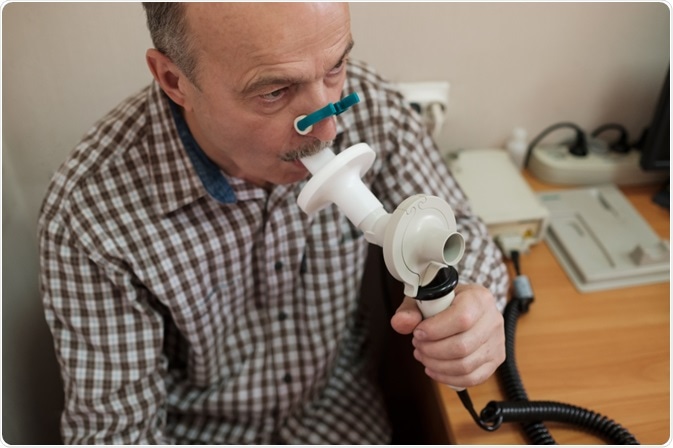Spirometry is a type of pulmonary function test that is used to measure and evaluate the function of the lungs for a variety of purposes. Spirometry is indicated in a variety of situations but is not recommended for others, as outlined in more detail below.
Learn About Spirometry: Taking a Lung Function Test
Indications
Spirometry is commonly used to detect and diagnose pulmonary diseases, such as:
- Asthma
- Chronic obstructive respiratory disease (COPD)
- Cystic fibrosis
- Pulmonary fibrosis
Additionally, individuals with these conditions will regularly require follow-up tests to monitor lung function and the progression of the disease. Spirometry also provides a technique to evaluate the efficacy of the medications used in the treatment of these conditions and any changes that arise over time.
Spirometry is also useful in determining the baseline lung function of an individual, thus providing a point of reference that can be used to compare future results against and identify any changes that occur over time.
This is particularly valuable for individuals who work in an environment with a high occupational risk for lung disease. This includes workplaces that are associated with increased exposure to irritants, such as dust and toxic particles in the air, that may cause a decline in lung function.
Additionally, spirometry tests can help in the investigation of certain respiratory symptoms, such as persistent cough or shortness of breath, also known as dyspnea. This diagnostic test may also be recommended for heavy smokers over the age of 35, due to the increased risk of pulmonary diseases in this patient population.
Spirometry is routinely included in pre-surgical tests to evaluate the risk of pulmonary complications prior to undertaking certain surgical procedures.

Image Credit: Koldunov / Shutterstock.com
Contraindications
Spirometry is generally considered to be very safe and rarely results in complications for patients. It can occasionally cause effects in some individuals, such as dizziness, faintness, shakiness, nausea, and fatigue; however, these are typically short-lived and resolve shortly after the test.
There are some instances when spirometry tests can do more harm than good and are contraindicated. In most cases, this is due to the effect of the increased pressure in certain areas of the body upon forced exhalation. In particular, this pressure affects the head, chest, stomach, and eyes, with some health conditions in these areas that can cause the patient to respond poorly to the spirometry test.
For example, a recent surgery to the head, chest, stomach, or eye regions may be affected by the pressure and heal incorrectly due to a spirometry test conducted shortly after the procedure. Additionally, unstable angina, uncontrolled hypertension, or a recent myocardial infarction (heart attack) or stroke are also contraindications for spirometry tests.
Other contraindications for spirometry include coughing up blood (hemoptysis) without a known cause, active tuberculosis, and a history of syncope associated with forced exhalation. Individuals with a history or increased risk of pneumothorax should also avoid spirometry testing.
Balancing indications and contraindications
Similarly to most decisions in healthcare, the final decision as to whether to use spirometry to gather information about the pulmonary function depends on the individual case. It is important for the healthcare professional to consider the potential risks and benefits for the individual to allow for the most appropriate therapeutic decision to be made.
References
Further Reading